Choosing between casement vs. sliding windows for your home is a big decision. They are two of the most popular types, but which one should you choose? Let’s break it down since they might look similar, but they have different features that could make one a better fit for your space.
Sliding Windows vs. Casement Windows: The Differences
Before we tell you the differences between casement vs. sliding windows, here are the similarities: casement and sliding windows in Los Angeles, CA, let in light and fresh air.
Physical Differences
- Casement windows are hinged on the side and open outward like a door. You turn a crank to open them. They are usually taller than they are wide, which makes them great for narrow spaces. With them, the screen is usually inside the window.
- Sliding windows have sashes that move side to side on a track. They’re simple to open by just sliding the window along. Also, they are wider than they are tall, so they’re perfect for more horizontal spaces. These windows have their screen on the outside.
Functionality
- Casement windows in Los Angeles, CA, require a crank to open. Although tricky for certain areas, they work great in spots where you can’t reach easily. These windows need space outside to open fully. So, if you have a patio or walkway outside, this could be an issue.
- Sliding windows, just slide them open, and you’re done. They don’t need extra space since they slide from side to side.
Ventilation
Casement windows can open all the way. They let in more fresh air. if you care about fresh air, they might be better. However, sliding windows only open halfway, so the airflow is limited.
Energy Efficiency
Casement windows tend to seal really tightly when closed. It keeps your heating and cooling bills low. Sliding windows don’t seal as tightly, so they might let more air in or out.
Casement vs. Sliding Windows: Which One Is Better for Your Home?
Look at the table below to see which one to use between casement vs. sliding windows, depending on your space:
| Situation/Location | Better Choice | Why |
| Narrow spaces | Casement | They’re tall and narrow, they fit well in tight spots. |
| Wide spaces | Sliding | Sliding windows are wider and provide a good view if you have a large space. |
| Small space outside (e.g., near walkways) | Sliding | They don’t need extra room to open, so they work well near paths or patios. |
| Hard-to-reach spots (like above sinks) | Casement | The crank makes them easier to open when the window is high up. |
| Rooms that need good airflow | Casement | They open fully, letting in a lot of fresh air. |
| Modern homes | Sliding | They have a sleek, simple look that fits well with modern designs. |
| Traditional homes | Casement | Their classic look works well with older, more traditional home designs. |
Casement vs. Sliding Windows Cost
When you think about windows, it’s not just the price of the window that matters! It’s also the cost of installation and how much you’ll save over time.
Initial Cost
Sliding windows are usually cheaper to buy because they have fewer parts and are simpler to make. Casement windows cost more because they have a crank mechanism and are more complex.
Installation Cost
Installing sliding windows is often easier, so the cost is usually lower. Casement windows take a little more work to install since they need to be set up properly to open and close smoothly.
Long-Term Savings
Casement windows can help you save money on your energy bills because they close tightly and are better at keeping the air inside your home. Sliding windows don’t seal as well, so they might let in more drafts, which could cost you more on your heating and cooling.
Casement vs. Sliding Windows Pros and Cons
Let’s break down the casement vs. sliding windows pros and cons even more:
| Casement Windows | Sliding Windows | |
| Pros | Great ventilation; they open all the way for better airflow. | Save space; they don’t need extra room outside to open. |
| Good at keeping the air in, which helps with energy bills. | Usually cheaper to buy. | |
| Secure; the lock system is built into the frame. | Let in plenty of light and offer great views. | |
| Cons | Need space outside to open, so not great near walkways or patios. | Limited airflow since they only open halfway. |
| Can be more expensive upfront and take more time to install. | Not as energy-efficient; the seal isn’t as tight. | |
| May require maintenance on the crank and other moving parts. | Tracks can get dirty and may need cleaning. |
Casement and Sliding Windows in Los Angeles, CA
If you’re in Los Angeles and thinking about getting casement and sliding windows, TEZA Doors and Windows is here to help. We offer expert advice and professional installation to make sure your windows look great and work perfectly for your home. Call us for a free estimate and let us help you choose the right windows!
Let’s Wrap It Up
Choose casement windows if you want maximum airflow and energy efficiency. Choose sliding windows if you’re tight on space or want a more affordable option. Either way, you need to consider the differences between casement vs. sliding windows, your space, and priorities before making a decision.
FAQs
Are casement windows better than sliding?
Casement windows tend to be better when it comes to ventilation and energy efficiency. However, it all depends on what works best for your space and needs.
What are the disadvantages of casement windows?
They need space outside to open, which may not be ideal in certain areas. They also cost more upfront and might need some maintenance on the crank.
Do casement windows cost more than sliders?
Yes, these windows generally cost more because they are more complex and require more parts to function properly.
What are the disadvantages of a sliding window?
These windows have limited ventilation since they only open halfway. They’re also not as energy-efficient as the other type, and their tracks can get dirty and may need regular cleaning.


